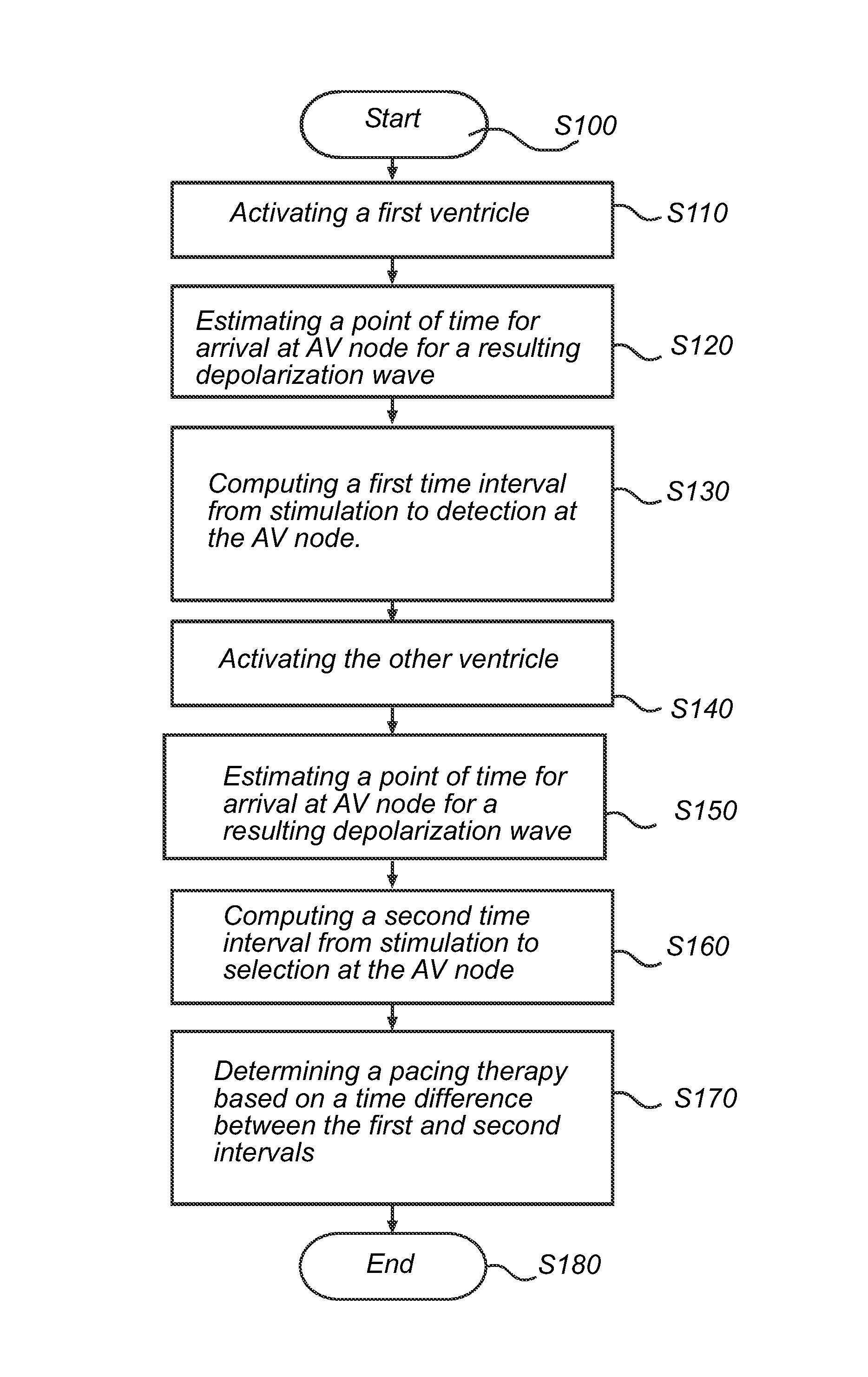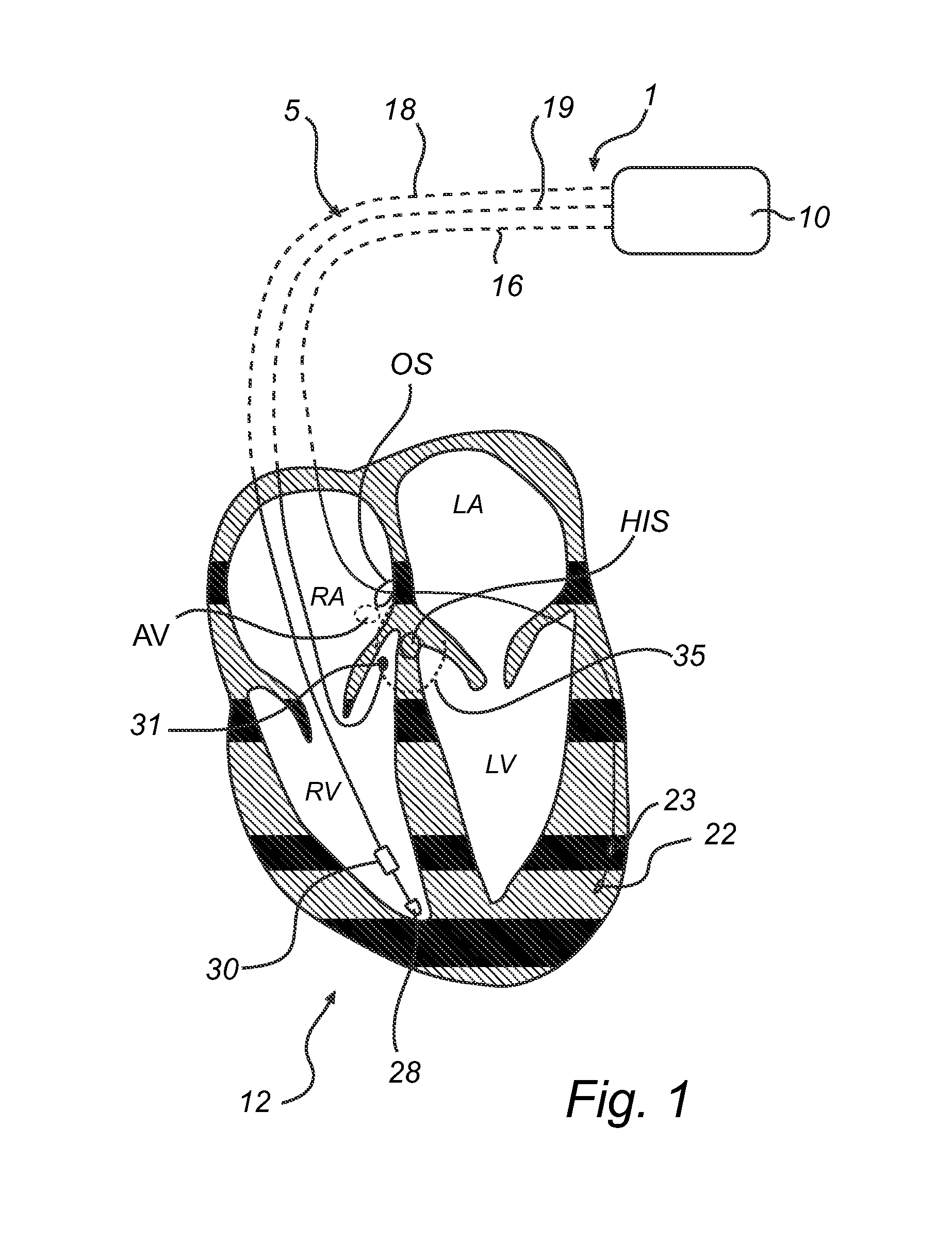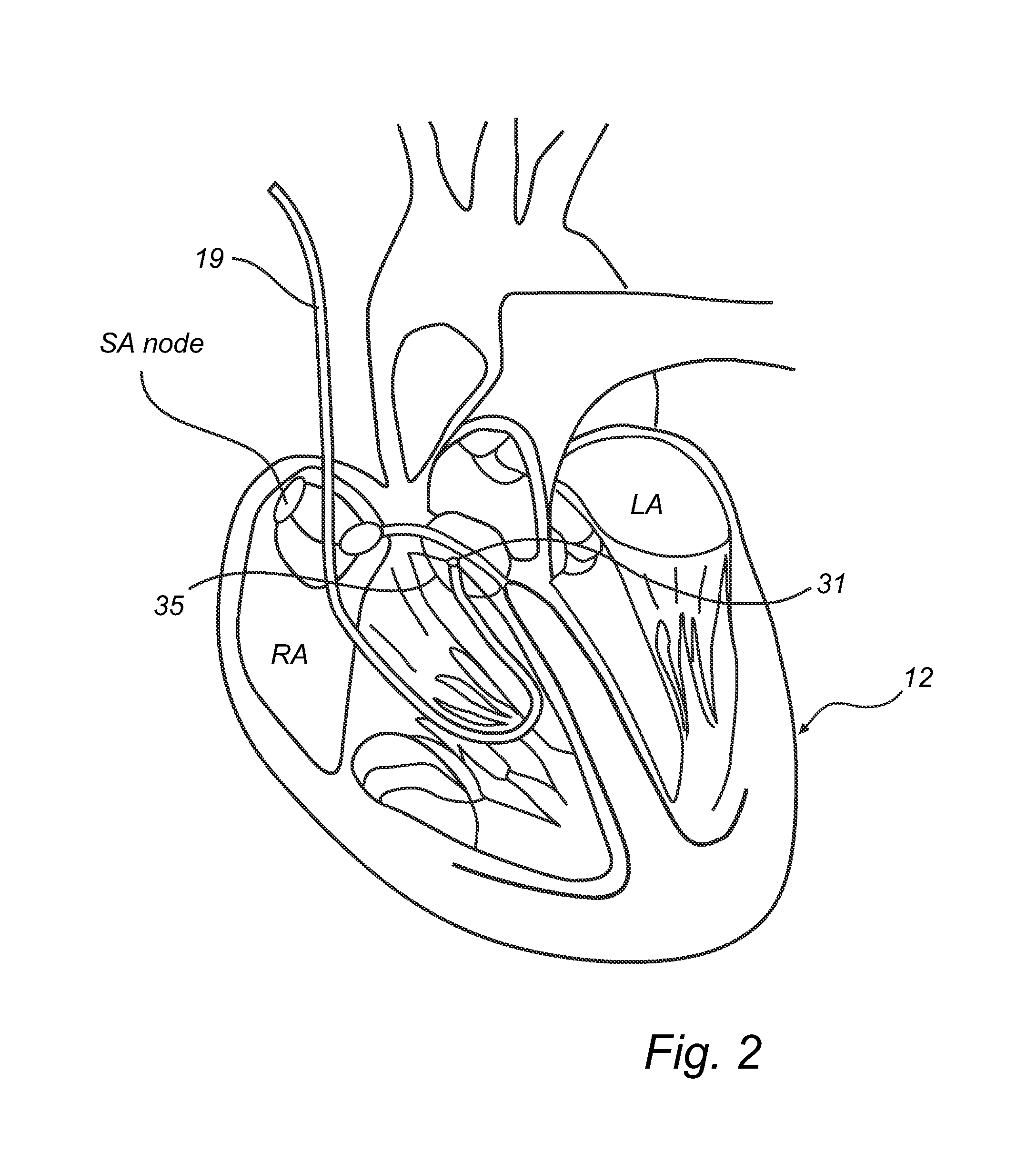Method and system for stimulating a heart
a heart and system technology, applied in the field of implantable medical devices, can solve the problems of difficult to continuously optimize the vv delay in patients treated with cardiac resynchronization therapy (crt), neither echocardiography nor invasive pressure measurements can be performed,
- Summary
- Abstract
- Description
- Claims
- Application Information
AI Technical Summary
Benefits of technology
Problems solved by technology
Method used
Image
Examples
Embodiment Construction
[0041]The following is a description of exemplifying embodiments in accordance with the present invention. This description is not to be taken in limiting sense, but is made merely for the purposes of describing the general principles of the invention. It is to be understood that other embodiments may be utilized and structural and logical changes may be made without departing from the scope of the present invention.
[0042]According to the present invention, the VV-delay optimization is preferably performed, generally described, by using a right ventricular tip electrode (or a right ventricular ring electrode) and the left ventricular tip electrode (or a left ventricular ring electrode) for delivering stimulation pulses and by using an electrode placed in close vicinity to HIS bundle, in close vicinity to the orifice of the Coronary Sinus or in left or right atrium for detecting the resulting depolarization wave as will be described below with reference to FIG. 1-4.
[0043]Referring fi...
PUM
 Login to View More
Login to View More Abstract
Description
Claims
Application Information
 Login to View More
Login to View More - R&D
- Intellectual Property
- Life Sciences
- Materials
- Tech Scout
- Unparalleled Data Quality
- Higher Quality Content
- 60% Fewer Hallucinations
Browse by: Latest US Patents, China's latest patents, Technical Efficacy Thesaurus, Application Domain, Technology Topic, Popular Technical Reports.
© 2025 PatSnap. All rights reserved.Legal|Privacy policy|Modern Slavery Act Transparency Statement|Sitemap|About US| Contact US: help@patsnap.com



